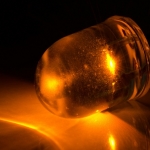An engineering professor from the Florida State University and his team have developed a new low-cost and highly efficient light emitting diode that could pave the way to more widespread use of LED lighting technology.
Zhibin Yu, an industrial and manufacturing engineering assistant professor at Florida State, said the new LED they have developed could revolutionize lighting technology as it could change current concerns regarding the cost of LED lighting.
The Department of Energy says that homes using LED technology can reduce their energy consumption by about 75 percent from when incandescent lighting is used. LED lighting systems can also last longer than fluorescent lights and 50 times longer than incandescent lights, but many have not yet made the switch despite the advantages of LED bulbs over traditional lighting.
To date, the relatively high cost of LEDs that can be attributed to the materials used and high manufacturing costs hinders the widespread adoption of LED lighting despite its promise of huge energy savings.
“In general, the cost of LED lighting has been a big concern thus far. Energy savings have not balanced out high costs” Yu said adding that FSU’s new LED could potentially change this.
The new LED technology Yu’s team developed uses a combination of inorganic and organic materials that dissolve and can be applied like paint. The material shines a red, green or blue light and can be used for making a light bulb.
What makes this LED technology particularly interesting is that it foregoes processes that made production using traditional methods more expensive. Instead of using four or five layers of materials on top of each other to achieve the product or effect needed, the new LED material only needs one layer, making LED easier to manufacture.
“Single-layer light-emitting diodes using the composite thin film sandwiched between indium tin oxide and indium-gallium eutectic alloy exhibit a low turn-on voltage and high brightness because of the ionic conductivity of the composite film and the formation of a p-i-n homojunction” Yu and colleagues wrote in their report of their single-layer LED, which was published recently.
Yu believes industrial and residential lighting technology can be revolutionized with the new improvements in manufacturing.
Yu’s team will continue to work on the technology. One of its objectives is to create stretchable, active-matrix organic LED screens.
Photo 2’s caption: Zhibin Yu, an industrial and manufacturing engineering assistant professor at Florida State













